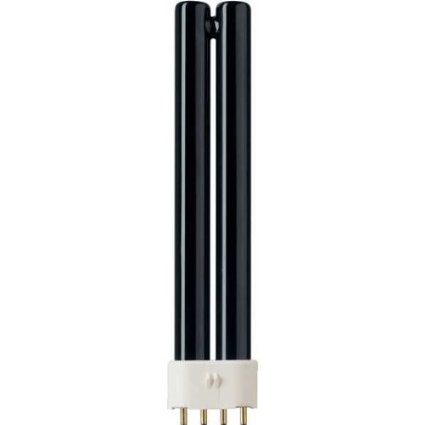
Ultraviolet light is that portion of the electromagnetic spectrum that lies beyond the purple edge of the visible spectrum and has wavelengths between 100 and 400 nm. The form of electromagnetic radiation that is most widely used to observe fluorescence is ultraviolet radiation, as generated by a "black light" or ultraviolet lights. In the early days of mining at Franklin NJ UV lights were an essential tool in locating the ore veins. UV lights are not only used by hobbyists to find these treasures but have been used by prospectors in the past to find minerals such as the fluorescent minerals uranium and scheelite - primary ores used for many purposes (see this blog post for more on radioactive minerals). These lights are used in the field to collect these beautiful minerals and are an essential tool. UV lights are the mainstay of the Fluorescent Mineral hobby.
#350 blb fluorescent black light flashlight pdf#
If you are really interested in Sir George Stokes, and his paper published in 1852, the full pdf of his research is posted here - On the Change of Refrangibility of Light For more in-depth research, read up on "Stokes Shift". With few exceptions, the energy of the emitted light is less energetic (a longer, visible wavelength) than the invisible UV excitation light. With phosphorescent minerals, the electrons are real slow to fall back into their low energy state, and continue to give off visible light over some period of time after the UV light is turned off. This process is repeated over and over until the UV light is turned off. Once they get bored, the electrons fall back to their low energy state, giving off the excess energy as visible, longer wavelength light. But they are fickle little electrons they don't remain excited for long. As a result, an electron of each atom is kicked out of its low energy "ground" state into a higher energy "excited" state. The atoms in some rocks, when exposed to ultraviolet light, are temporarily "excited" by the shorter wavelength (ultraviolet) light. The amount/type of activators and quenchers in a mineral determine the fluorescent color and brightness. Different activators, in varying quantities, along with other impurities (quenchers, such as iron) can make the same mineral fluoresce in different colors, or not fluoresce at all. Impurities, usually called "activators", cause a mineral to fluoresce. Most minerals do not fluoresce when pure (minerals like scheelite are an exception).

But almost any mineral can "glow" under UV light with the right conditions. Typical fluorescent minerals include: aragonite, calcite, fluorite, powellite, scheelite, sodalite, willemite, and zircon. This is called photoluminescence and is divided into two categories, fluorescence and phosphorescence. We're interested in the type of luminescence generated by the absorption of light - specifically ultraviolet light. Luminescence is when light is generated without heat, typically by an action or reaction: a Wint-O-Green life saver sparks when it breaks apart, a lighting bug glows through a chemical reaction in its abdomen, static electricity creates flashes when there’s an imbalance of electrical charges. Incandescence is light from heat energy, such as the sun, a light bulb, stovetops, fire, etc. Two familiar types of light are incandescence and luminescence. All light is created by some type of energy.


It takes some nifty science to make fluorescence happen.


 0 kommentar(er)
0 kommentar(er)
